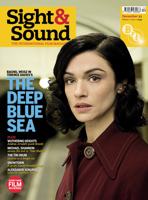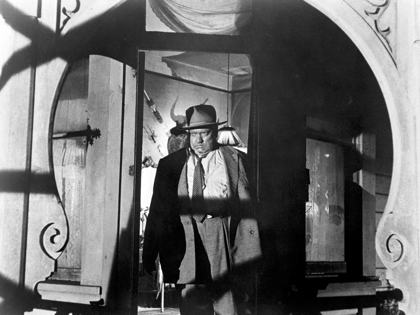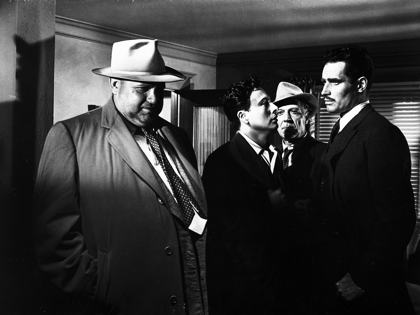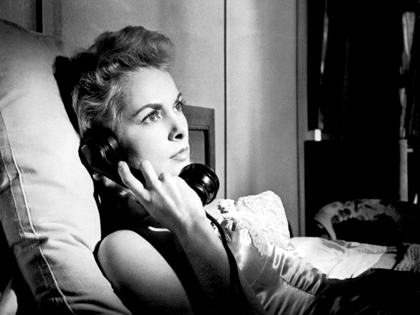Primary navigation


Touch of Evil has been described as the last film noir. More like the first last film noir, reckons Brad Stevens
Touch of Evil
Orson Welles; US 1958; Certificate 12; 111 / 109 / 95 minutes; Aspect Ratio 1.85:1 / 1.37:1
Masters of Cinema / Region B Blu-ray; Features: four audio commentaries (by Rick Schmidlin; Charlton Heston and Janet Leigh; James Naremore and Jonathan Rosenbaum; F.X. Feeney), trailer, Bringing Evil to Life, Evil Lost and Found, booklet
Given the amount of critical attention it continues to attract, film noir has proved peculiarly difficult to define, the only thing one might say with any confidence being that, to misquote Marlene Dietrich at the end of Orson Welles’s Touch of Evil, it was “some kind of a genre”. No American director would have claimed they were making a film noir in the 1940s or 1950s, the term being invented after the fact in order to link a group of movies that had a similar sensibility. According to François Truffaut, the name came about due to a misunderstanding: when The Southerner (1945) was first screened in France, journalist Henri Magnan described it as “un film de Jean Renoir” during a telephone conversation with his editor, who misheard this as “un film de genre noir”.
Purists insist that the noir cycle starts with Boris Ingster’s Stranger on the Third Floor (1940) and ends with Touch of Evil (1958). But it is entirely appropriate that this genre which never really was a genre should have an ending that was nothing of the sort. Welles’s film might more accurately be called the first last film noir, distinguished examples of the genre continuing to be produced for more than two decades afterwards. Even Robert Altman’s The Long Goodbye (1973), usually seen as an anti-noir, depended for its effect on the assumption that it was attacking something that still possessed contemporary relevance, having not yet become the property of ironists and academics. Ivan Passer’s Cutter’s Way (1981) seems to me the best candidate for the title of last film noir, with the following year’s Blade Runner representing the birth of post- or neo-noir, in which the genre’s tropes are revived self-consciously (though the latter tendency can be traced back to Dick Richards’s 1975 Raymond Chandler adaptation Farewell, My Lovely).

Touch of Evil is an especially appropriate non-finale for a group of films chiefly concerned with the difficulty of defining borders between good and evil, hero and villain, cop and criminal, democracy and fascism, often insisting that these divisions are neither neat (good and evil being relative) nor straightforward (perhaps it is the cop rather than the criminal who is the true fascist). Welles’s film interrogates this theme with particular ruthlessness, using its setting of a town on the border of Mexico (traditionally associated with lawlessness and rebellion) and the US (home of democracy and order) as a symbolic landscape in which the noir genre is treated to an apocalyptic summing-up (the sense of generic impurity being strengthened by several striking anticipations of Hitchcock’s Psycho). Welles shoots and – to the extent that he controlled post-production – edits the film in a fragmented manner which suggests that the line between good cop Vargas (Charlton Heston) and bad cop Quinlan (Welles) is particularly thin, the obligatory attempt to restore normality at the conclusion being deliberately arbitrary.
So it is highly appropriate that the film itself should prove so textually unreliable, the initial 95-minute release version, which included a sequence reshot by Harry Keller, eventually being replaced by a 109-minute preview version that came to light in 1975. This longer print added some important footage directed by Welles, but included even more Keller material, and was in turn supplanted by a 1998 reconstruction which carried out a number of suggestions Welles made in a memo after watching Universal’s cut, notably having the opening shot play without either credits (which now appear at the end) or Henry Mancini’s music.
This 111-minute variant also restores a small amount of footage that was present in the shorter general release print but missing from the longer preview version: it appears 15 minutes in, just after Vargas chases the thug who’s thrown acid at him, and consists of some dialogue between Vargas and Joseph Calleia’s Sergeant Menzies (“Anything wrong, Vargas?” “No, I just couldn’t catch him”). One of Keller’s scenes has thankfully been cut, though the other – a romantic interlude in a car involving Charlton Heston, Janet Leigh, painfully obvious back-projection and some dialogue clearly not written by Welles (“Do you realise I haven’t kissed you in over an hour?”) – unfortunately remains.

Even the film’s correct ratio is uncertain: Welles must have known that theatrical prints would be masked at 1.85:1, but there is plenty of onscreen evidence to suggest that he was composing for a 1.37:1 ratio (widescreen transfers frequently bisect the actors’ heads). Masters of Cinema’s new Blu-ray release commendably offers us all three versions, with the theatrical cut and the reconstruction viewable at either 1.85 or 1.37. The preview print is in 1.85 only (HD materials were unavailable), though many of us will have grown up watching precisely this version at 1.37, which is how it used to be shown by the BBC.
The variety of viewing options makes this two-disc set preferable to Universal’s 50th anniversary edition Region 1 DVD, which was criticised for framing all three versions at 1.85 only, and the new high-definition transfers are razor-sharp. The lavish extras are taken from Universal’s disc: four separate commentary tracks (including one with now deceased stars Heston and Leigh), a trailer that contains some takes not used in any cut of the film, and two short documentaries (which have 2008 copyright dates but consist entirely of footage from the 1999 documentary Reconstructing Evil). MoC’s package also includes a 56-page booklet with essays by François Truffaut, André Bazin and Welles, as well as notes on the film’s variant versions and ratios.
Odds Against Tomorrow remembered by Paul Tickell (December 2011)
Across the Bridge remembered by Paul Mayersberg (August 2011)
How to tell a true war story: Nick Pinkerton on Vietnam, vigilantism, Taxi Driver and Cutter’s Way (May 2011)
Me and Orson Welles reviewed by Nick Bradshaw (January 2010)
Cradle Will Rock reviewed by Philip Strick (May 2000)
The Vienna project: Peter Wollen on the true-life tale behind The Third Man (July 1999)